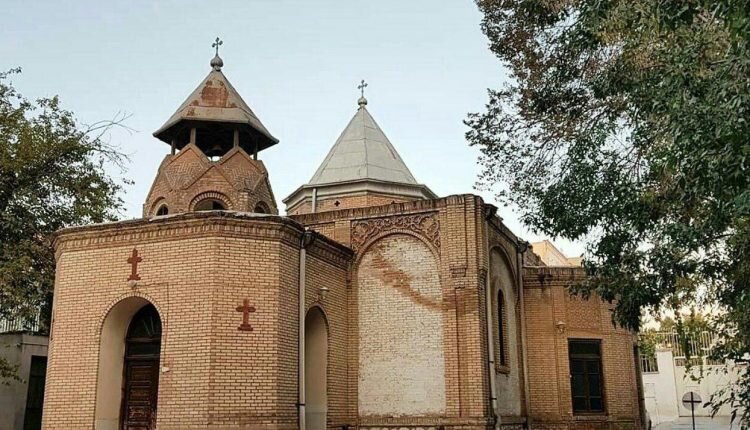Explore historical churches, Armenian neighborhoods while in Qazvin

TEHRAN – A Muslim-majority country, Iran is home to many gorgeous churches and chapels that feature amazing architecture and exquisite ornate works.
The ancient city of Qazvin is blessed with some historical churches and Armenian neighborhoods, which are visited as travel destinations for their splendor and architectural beauty.
Armenian neighborhoods of the west-central city mainly date from the time of Shah Abbas I, who transported crowds of Christians from the town of Jolfa (now on Iran’s northern border) to Iran. Shah Abbas sought their skills as merchants, entrepreneurs, and artists and he ensured that their religious freedom was respected.
Of the most famed churches in Qazvin is Cantor (or Kantur) Church, which was built in 1905 for Russian engineers hired for road constructions.
Armenian neighborhoods of Qazvin can be traced even in books and travelogues authored by Western globetrotters such as Jean Chardin (1643 – 1713), Jean-Baptiste Tavernier (1605–1689), and Pietro della Valle (1586 – 1652), according to experts.
Chardin was a French jeweler and traveler whose ten-volume book The Travels of Sir John Chardin is regarded as one of the finest works of early Western scholarship on Persia and the Near East in general. Tavernier was a 17th-century French gem merchant and traveler, who at the behest of his patron Louis XIV, published Les Six Voyages de Jean-Baptiste Tavernier (Six Voyages, 1676). And Valle was an Italian composer, musicologist, and author who traveled throughout Asia during the Renaissance period. His travels took him to the Holy Land, the Middle East, Northern Africa, and as far as India.
Qazvin was once the capital of the mighty Persian Empire, under Safavids, from 1548 to 98. It is a major tourist destination with a wonderfully restored caravanserai-turned-arts precinct, some quirky museums, and a handful of decent eating options. For most travelers, Qazvin is also primarily the staging point for excursions to the famous Castles of the Assassins and trekking in the sensational Alamut Valley.
The city is also home to one of the biggest roofed caravanserais of the country, Sa’d-al Saltaneh caravanserai. Dating back to the Qajar era, it’s a place for discovering tens of Hojreh or shops, cafes, yards, and a stunning mosque. It’s a place for visitors who want to experience the culture, culinary, and hospitality of Iran.
Peaceful coexistence between Muslim, Jewish, Christian, and Zoroastrian communities is a social phenomenon that can be traced in various documents narrated by many travelers to the country.
AFM

Leave a Comment